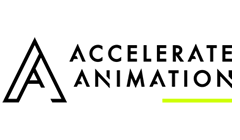Accelerate Animation | Introduction - Accelerate Animation Report
Introducing the Accelerate Animation Report, mapping the changing landscape of contemporary creative animation and its practitioners.
animation, artists, innovation, practice, development, animators, art student,animation movies, animate, stop motion, cell, 3d animation, films, cinema, movement, craft, design, university, arts, professional, creative, showcase
20599
wp-singular,page-template,page-template-full_width,page-template-full_width-php,page,page-id-20599,page-child,parent-pageid-18500,wp-theme-hazel,ajax_fade,page_not_loaded,,select-theme-ver-2.7,wpb-js-composer js-comp-ver-7.9,vc_responsive
The Accelerate report attempts to map the changing landscape of
contemporary creative animation. There has been very little research on
animation as a creative business practice and with this report we have gathered
evidence of the work people are doing, how that is organised, the kinds of
portfolio careers people are making for themselves, and the contribution
animators make to the creative UK’s creative industries, culture, and economy.
The research is intended to inform the creation of a new professional development programme, Accelerate Animation, for independent, creative animators working across a broad range of cultural and commercial practice. The Accelerate initiative aims to address the
gaps in professional and practice development support for creative animators and the urgent needs that have arisen from changing models of production, practice, and career.
The Accelerate Animation programme – in partnership with higher education and other agencies, and working closely with the sector itself – will help equip animators, artists, creative producers and businesses to succeed in this fast changing context, and to maximise their creative and economic potential and impact.
The Accelerate Animation programme aims to:
• Assist early career and established animators to develop their creative and business skills
• Facilitate a bridge between higher education and professional practice
• Offer access to crucial peer and professional networks
• Provide development support beyond the basics of industry practice
• Provide opportunities for training and development not readily available to freelance workers such as personal effectiveness and impact, presentation and negotiation skills, understanding markets and audiences.
The report includes the findings of a survey that asked animators about their practice and their development needs. We also had more detailed conversations with 22 animators and producers to profile and evidence the range of different organisations – studios, collectives, partnerships, and individuals – that comprise the sector, and we held a round table discussion, with animators, producers and educators, that explored some of the broader issues that frame the development of animation practice.
We hope that the report will help the sector better understand itself and what it needs to realise its potential. And we hope that it will also inform others about the sector and its value, not least those who develop strategic policies for support of art, film and creative media, so that its needs can be met.
We believe this report makes a powerful case that animation, and its practitioners, makes a substantial and vital contribution to the creative industries, and significantly contribute to the UK’s reputation as a centre of creative excellence. There are strong cultural and economic reasons to invest in the sector’s development. The public value of independent animation is extensive, intrinsic and instrumental. There are many reasons why independent animation merits public support and investment, not least that it has a significant cultural value in its own right.
And yet animation is surprisingly absent from general policy on arts, film and the creative industries. In part, this is down to the lack of a collective voice: in this instance, our diversity has not been our strength, and makes it difficult for our case to be heard by policymakers.
So, whilst Accelerate Animation will provide and signpost opportunities for training and development, it is also is intended to be a space for advocacy and discussion, and we hope that this report will initiate a dialogue between animators and stakeholders.
Gary Thomas
Animate Projects
November 2013


